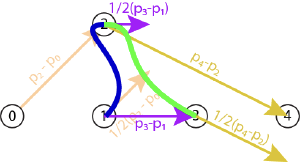Pre-graphics
Defer
<script src="file.js" type="module" defer></script>
- load the module from the file
- dont execute until the page is loaded
window.requestsAnimationFrame(func);
- this puts an event on the event queue
- it will be some time in the future(nexr frame)
- it will happen after current function finishes
Time delta
<script type="module">/* Slider 2 - measure the time between iterations */let lasttime; // time/** @type{HTMLInputElement} */ let slr = (/** @type{HTMLInputElement} */ document.getElementById("slider2"));function advanceSLR(timestamp) {let newValue;if (lasttime === undefined) {newValue = 0;} else {// doing this in steps to explain...const delta = (timestamp - lasttime); // how many milliseconds since last updateconst change = delta / 1000.0 * 100.0; // want the slider in 1000ms, but the slider is 100 unitsnewValue = (Number(slr.value)+change) % 100; // move the slider forward}slr.value = newValue.toString();window.requestAnimationFrame(advanceSLR);lasttime = timestamp; // remember the last update}window.requestAnimationFrame(advanceSLR);</script>
<script type="module">/* Slider 6 - measure the time between iterations *//* this is similar to slider 2, except that we store the "current value"ourselves, so we are not subject to rounding errors*/let lasttime; // timelet value = 0;/** @type{HTMLInputElement} */ let slr = (/** @type{HTMLInputElement} */ document.getElementById("slider6"));function advanceSLR(timestamp) {if (! (lasttime === undefined)) {const delta = (timestamp - lasttime) / 10.0;value = (value + delta) % 100;}slr.value = value.toString();window.requestAnimationFrame(advanceSLR);lasttime = timestamp; // remember the last update}window.requestAnimationFrame(advanceSLR);</script>
Basic graphics
Representing images types
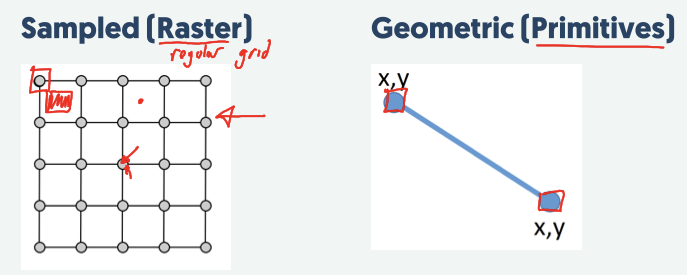
- Sampled(raster)
- LCD/LED/CRT
- laser printer, inkjet printer
- film, irregular grid of crystals
Geometric(primitives)
flicker fusion: flashing things seem continues
- draw too slowly: double buffering, draw in back
Even / Odd and Winding(Non-zero)
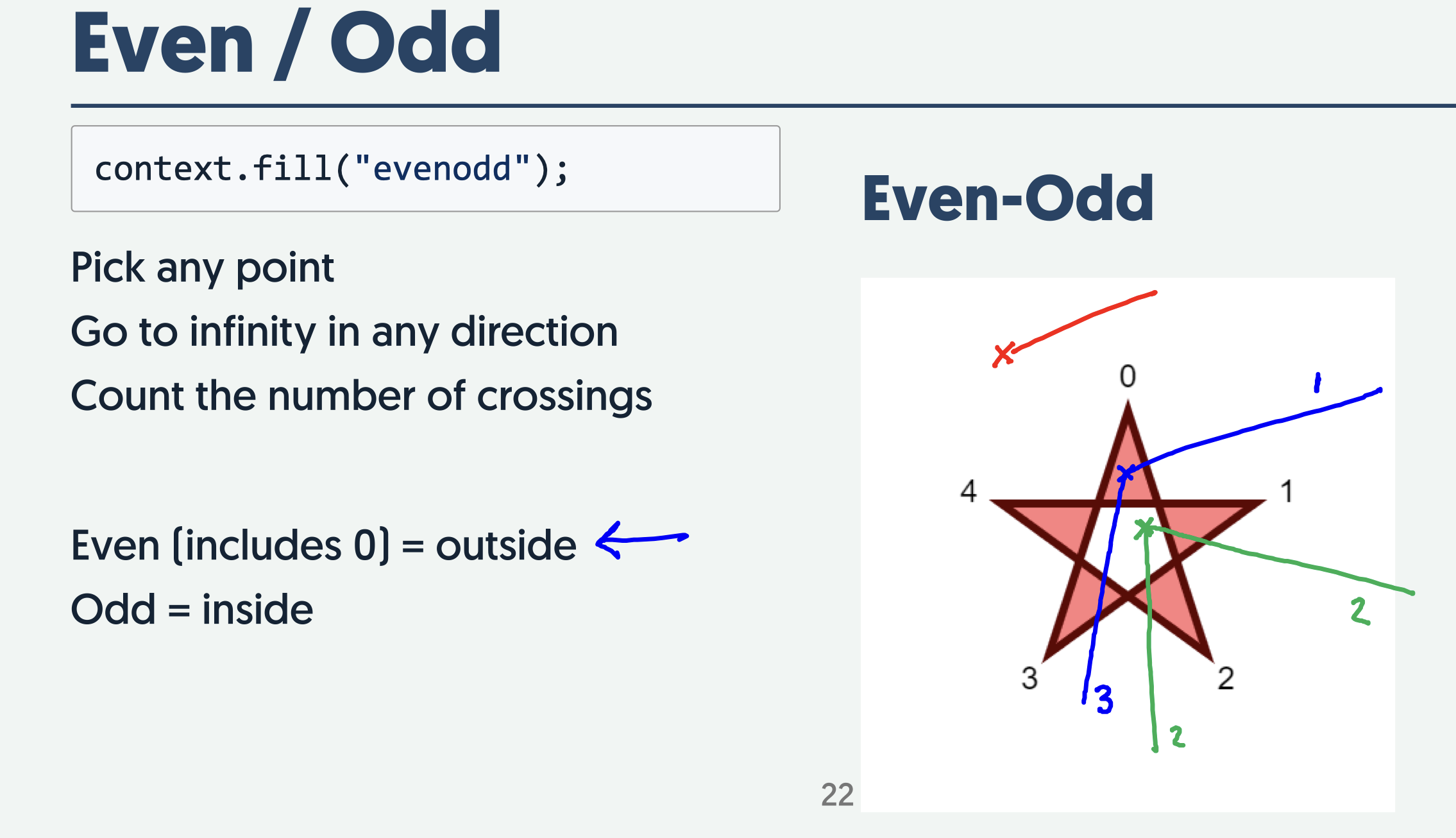
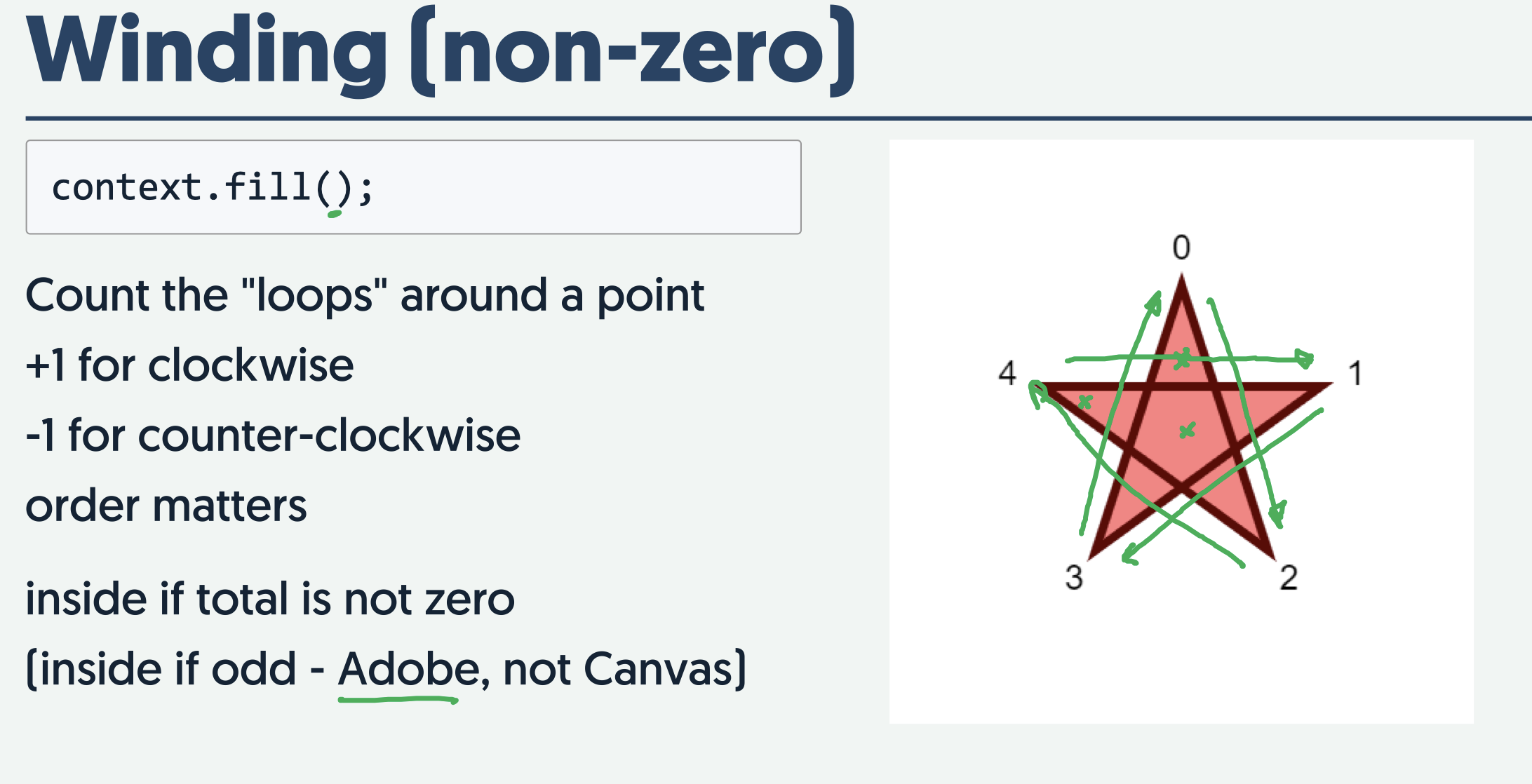
Even/Odd:
- Even(includes) -> outside
- Odd -> inside
Winding(non-zero):
- Canvas 2D
- an immediate mode 2d drawing library, 1 DOM element for picture
- SVG(scalable vector graphics)
- a display-list(object-based) graphics library
- grphics objects are DOM elements
- WebGL
- direct access to the graphics hardware
- require low-level control
Immediate vs. Retained APIs
Canvas is the immediate API, while SVG is the retained API
2D transformation
translate and scale (order matters!)
context.scale(sx, sy); -> scale
context.translate(2,2); -> translate
- scale and translate
context.scale(sx,sy);
context.translate(tx,ty);
context.lineTo(X,Y);
means for all X, Y:
context.lineTo(sx(X + tx), sy(Y + ty))
- translate and scale
context.translate(tx,ty);
context.scale(sx,sy);
context.lineTo(X,Y);
means for all X, Y:
context.lineTo(tx+(Xsx), ty+(Ysy))
rotation

rotate around a point:
context.translate(cx,cy);
context.rotate(angle);
context.translate(-cx, -cy);
drawThing();
skew (shear)
Function composition
x= **h**( **g**( f(**x**))) -> x= (h o g o f)(x)
Homogeneous Coordinates
translate:
[1 0 1 [x [x + 1
0 1 1 y y + 1
0 0 1 ] * 1] = 1]
scale:
[2 0 0
0 2 0
0 0 1]
ATTENTION:
[ 1 0 0
0 1 0
0 0 2 ]
->
[ x/2
y/2
1 ]
2 here means scale by 1/2
Curves
Curves 1
C(n) continuous
C(0) - position, no gaps
C(1) - positions and tangents, no corners, G1 only the direction, but C1 both direction and size
C(2) - positions and tangents and 2nd derivatives (切线大小一样), if C(2), almost must G(2)
Curves 2
Cardinal Cubics - C(1)
Cardinal Splines
The trick to cardinal splines is that we compute the derivatives at any point based on the previous and next point.
s = (1-t) / 2
p′i=s*(pi+1−pi−1), when s = 1/2, we call this cardinal splines
DeCastlejau Constructions
We ues DeCastlejau Constructions to get point position in any position.(when u = what?)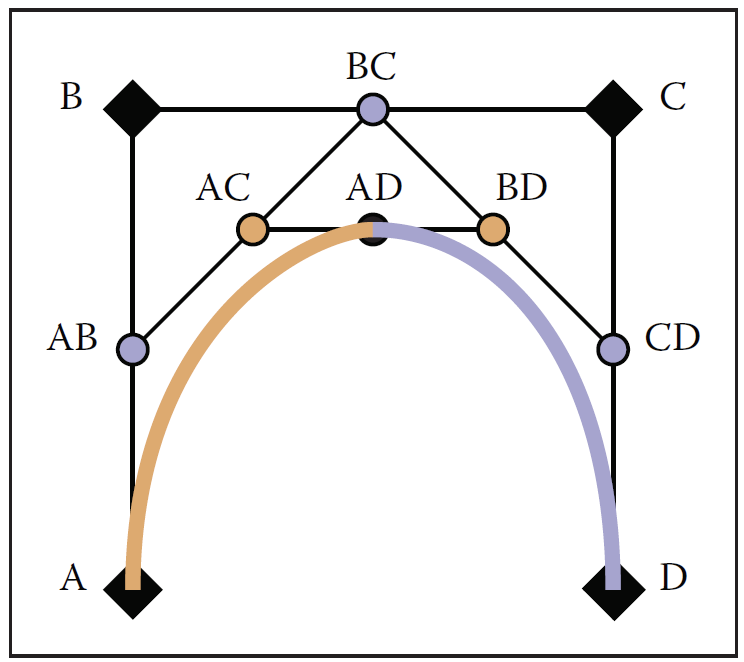
Simple example: [0,8,16,24]
[4,12,20]
[8,16]
[12]
We get the final x value as 12.
Cubic Bézier Curves
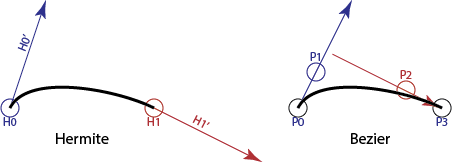
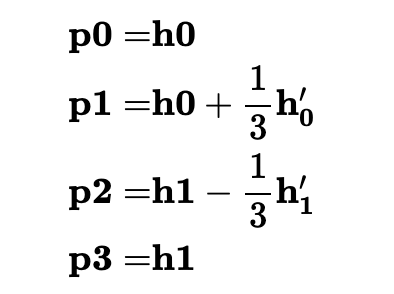
f′(0)=h′0=3(p1−p0)f′(0)=h0′=3(p1−p0)
the tangent is the difference in points times 2 for quadratic
Example:
A curve is made from two Bezier Segments that meet with C(1) continuity.
The first segment is a cubic and has its control points at (0,0), (0,2), (4,6), and (6,6)
The second segment is a quadratic, and has its control points at (6,6), (9,6), (12,0)
the first control point must be the same as the last control point of the previous segment
We know the tangent vector where the curve meets must be 3 ( (6,6)-(4,6) ) or (6,0). So, to have that tangent vector, the quadratic must have its second point at (9,6). (the tangent is the difference in points times 2).
Curves 3
Beziers
Good:
- interpolate end-points, stay in convex hull
- tangents at ends based on points
Not Good:
- not projective invariant
- cannot represent conics 圆锥曲线, circle
sometimes we want interpolation
Cardinals (local, next and prev.)
C(1)
- local
-
Natural Splines (Cubics) (not local)
C(2)
- second derivative is zero at the ends
-
B-Splines (local) - C(d - 1)
d = 1, line segments [p0,p1], [p1,p2],…[pn-1,pn]
- d = 2, quadratics [p0, p1, p2], [p1, p2, p3],..[pn-2, pn-1, pn]
- uniform low order polynomial, d = 2 or 3 in graphics
- Cubic B-Splines:
- 4 points influence a curve segment(locally),
- neighboring segments share 3 points
- each segment is a cubric polynomial
- Locality: each control point influences d+1 segments
- Continuity: curve is C(d - 1)
- not interpolating
